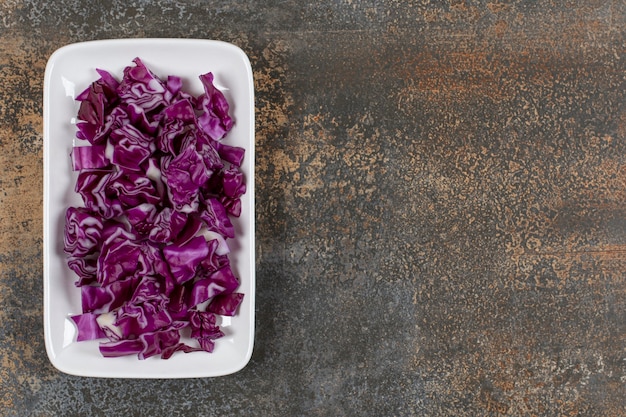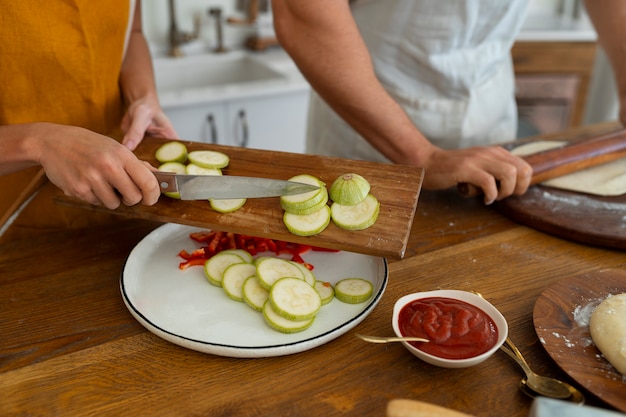Let's talk cabbage. Not just any old cabbage, mind you, but the perfect sidekick for your magnificent corned beef. Now, I've been cooking up corned beef for years, and I've learned a thing or two about making cabbage the star of the show. We'll be exploring different cooking methods, from traditional to adventurous, and I'll share my tips to make sure your cabbage is the perfect complement to your corned beef. So grab your apron, grab your favourite pot, and let's get cooking!
(Part 1) Choosing the Right Cabbage

You might think, "It's just cabbage, right?" But believe me, there's a world of difference between a good cabbage and a bad one. For a perfect corned beef feast, you want a firm, dense cabbage. It should feel heavy for its size and have a bright green color. A cabbage that's soft or has brown spots is a no-go. You wouldn't want a soggy cabbage ruining your perfectly cooked corned beef, right?
What Type of Cabbage?
You've got some choices when it comes to cabbage types. The most popular choice for corned beef is the classic green cabbage. This dependable option has a mild, slightly sweet flavor that complements the corned beef beautifully. But if you want to add a splash of color and a touch of sweetness, red cabbage is a great alternative. And if you're feeling adventurous, savoy cabbage is a wonderful choice for its distinctive wrinkled leaves and slightly nutty flavor. Personally, I find green cabbage offers the best balance of texture and flavor, but experiment and find what you like best.
Size Matters
Remember, the size of your cabbage matters. You want a cabbage that's just the right size to fit comfortably in your pot. It's all about balance, you know? And when you're cutting it, leave the core intact for now. We'll deal with that later.
(Part 2) The Classic Approach: Simmered Cabbage

Now, this is the traditional way to cook cabbage for corned beef, and for good reason. It's simple, it's reliable, and it produces a beautifully tender cabbage. The key to this method is cooking the cabbage in the same pot as the corned beef. The flavors mingle together, creating a truly delicious result.
Simmering Secrets
Here's how to do it. Once your corned beef has been simmering for a while, add your chosen cabbage to the pot. You'll want to add it about an hour before the corned beef is fully cooked. Make sure the cabbage is fully submerged in the liquid. If not, add a bit more water to the pot. Now, simmer the cabbage gently, covered, until it's tender and cooked through. This usually takes about an hour.
Checking for Tenderness
To check if the cabbage is done, simply pierce it with a fork. If it goes through easily, it's ready. You can also taste a small piece to make sure it's cooked to your liking. Don't worry, the cabbage will soften as it sits, so it's better to be a bit undercooked than overcooked.
(Part 3) The braised cabbage Option

If you're looking for a slightly more flavorful approach, braising your cabbage is a fantastic option. Braising adds a depth of flavour and a lovely tenderness to the cabbage. The key here is to use a combination of liquids, like beef broth and apple cider vinegar.
The Braising Process
First, slice your cabbage into wedges or quarters, removing the core. Then, heat a little oil in a large pot or dutch oven. Add your sliced cabbage and cook for a few minutes until lightly browned. This step brings out the natural sweetness of the cabbage. Now, pour in your beef broth and apple cider vinegar, and add any spices you like. Cover the pot and simmer the cabbage until tender, about 45 minutes to an hour.
Flavor Boosters
To enhance the flavour further, you could add some diced onion, garlic, or even a bay leaf to the pot during braising. Don't be afraid to experiment with different herbs and spices to create a flavour profile that perfectly complements your corned beef.
(Part 4) The Roasted Cabbage Alternative
Let's break away from the traditional methods. Roasting your cabbage is a fantastic way to bring out its natural sweetness and create a lovely caramelization. You can roast the cabbage whole or cut it into wedges.
Roasting Instructions
Start by preheating your oven to 400°F (200°C). Then, cut the cabbage in half and remove the core. Place the halves cut-side down on a baking sheet. Drizzle with olive oil and season with salt, pepper, and any other herbs or spices you like. Roast the cabbage for 45 minutes to an hour, or until tender and slightly browned.
roasting tips
For extra flavour, you can add a little bit of butter or bacon grease to the baking sheet before roasting. You can also add a few slices of lemon or orange to the baking sheet for a citrusy twist. Just make sure the citrus slices are facing the cabbage for maximum flavour infusion.
(Part 5) The Crispy Cabbage Option
If you're a fan of crispy textures, then this option is for you. Crisp cabbage is a great alternative to the traditional mushy cabbage. It's simple to make and adds a delightful crunch to your corned beef meal.
Crispy Cabbage Technique
Here's how to do it. Slice your cabbage into thin strips. Then, heat a little oil in a large skillet over medium heat. Add the cabbage strips and cook until crispy, about 5 minutes, stirring occasionally. Season with salt, pepper, and any other spices you like. You can even add a sprinkle of paprika or smoked paprika for a smoky flavour.
Crispy Cabbage Variations
For an extra kick, you can add some diced bacon to the skillet before adding the cabbage. Or you can toss the cabbage in a bit of soy sauce and sesame oil for an Asian-inspired twist. The possibilities are endless!
(Part 6) The Ultimate Corned Beef and Cabbage Pairing
Now, we've covered the different ways to cook cabbage, but how do you know which one to choose? Well, it really depends on your personal preference and the rest of your corned beef meal.
The Traditional Pairing
For a classic corned beef and cabbage experience, the traditional simmered cabbage is the way to go. It's a tried and true pairing that complements the corned beef perfectly. The subtle sweetness of the cabbage balances the saltiness of the corned beef, creating a harmonious symphony of flavors.
The Modern Twist
If you're looking for a modern take on the classic, braised or roasted cabbage can add a delightful twist. The braised cabbage provides a more intense flavour, thanks to the richness of the beef broth and the tanginess of the apple cider vinegar. The roasted cabbage offers a caramelized sweetness that adds a touch of sophistication to the dish.
The Crunchy Option
And if you want to add a touch of crunch to your meal, crispy cabbage is the perfect choice. It's a great way to add texture and a bit of tang to your corned beef. The crispy texture provides a nice contrast to the tender corned beef, creating a truly satisfying experience.
(Part 7) Serving Your Cabbage Masterpiece
Right, now that you've cooked your perfect cabbage, it's time to serve it up.
Cabbage Presentation
For simmered and braised cabbage, you can serve it directly from the pot alongside your corned beef. For roasted cabbage, you can arrange it on a platter alongside the corned beef. And for crispy cabbage, you can serve it in a bowl or on a plate as a side dish.
Don't Forget the Sides
To complete your corned beef and cabbage feast, you can serve it with classic sides like mashed potatoes, boiled carrots, or a side of mustard. These simple sides complement the corned beef and cabbage perfectly and create a truly satisfying meal.
(Part 8) Storing Leftovers
Let's be honest, you're probably going to have some leftovers. And that's perfectly fine.
Storing Tips
To store your cooked cabbage, simply transfer it to an airtight container and refrigerate it for up to 3 days. You can reheat it in the microwave or on the stovetop.
Leftover Magic
If you have some leftover cabbage, don't throw it away! You can use it to make a delicious coleslaw, a hearty soup, or even a filling for a sandwich. You can also add it to a stir-fry or use it as a base for a salad.
(Part 9) FAQs
Here are some frequently asked questions about cooking cabbage for corned beef:
1. How do I know when the cabbage is done?
The best way to tell if your cabbage is done is to pierce it with a fork. If it goes through easily, it's ready. You can also taste a small piece to make sure it's cooked to your liking. Remember, it's better to be a bit undercooked than overcooked.
2. Can I add other vegetables to the pot with the cabbage?
Absolutely! Carrots, potatoes, and turnips are all great additions to your corned beef and cabbage pot. Just make sure to add them at the same time as the cabbage so they cook evenly. If you're adding potatoes, make sure to cut them into smaller pieces so they cook through at the same time as the cabbage.
3. What spices can I add to my cabbage?
You can use pretty much any spices you like! Some popular choices include black pepper, bay leaves, thyme, rosemary, and paprika. Get creative and experiment with different combinations. For a classic flavor, try adding a bay leaf and some black peppercorns to the pot. If you're feeling adventurous, try adding a pinch of smoked paprika or a sprig of fresh thyme.
4. Can I freeze my cooked cabbage?
Yes, you can freeze cooked cabbage for up to 3 months. Just make sure to let it cool completely before freezing. When you're ready to use it, thaw it in the refrigerator overnight. You can then reheat it in the microwave or on the stovetop. Keep in mind that freezing can sometimes affect the texture of the cabbage, so it might not be as crisp as it was fresh.
5. What do I do if my cabbage is too salty?
If you find your cabbage is too salty, you can try to dilute the saltiness by adding a little bit of water to the pot. You can also try adding a bit of sugar to balance out the salt. Just a pinch will do the trick. If you're using a slow cooker, you can try adding a few slices of apple or potato to the pot. The apple or potato will absorb some of the salt, making the cabbage less salty.
I hope this guide has been helpful. Remember, cooking cabbage for corned beef doesn't have to be complicated. Just choose a method you like, experiment with flavours, and most importantly, have fun!
Everyone is watching

How to Cook Frozen Lobster Tails Perfectly: A Step-by-Step Guide
RecipesLobster. Just the word conjures up images of lavish meals, special occasions, and a taste of luxury. But let's...

Pigs in a Blanket Cooking Time: How Long to Bake for Perfect Results
RecipesAh, pigs in a blanket. Just the name conjures up images of those delightful little parcels of crispy pastry en...

Pork Fillet Cooking Time: How Long to Cook It Perfectly
RecipesPork fillet, or tenderloin as it's sometimes called, is a real favourite in our house. It's so versatile, and...

The Ultimate Guide to Tender, Juicy Pulled Pork
RecipesRight, let's talk pulled pork. It's one of those dishes that just screams "comfort food," doesn't it? I mean...

The Ultimate Guide to Cooking Sweet Potatoes: From Roasting to Mashing
RecipesSweet potatoes. Just the name conjures up images of warm, comforting dishes, bursts of vibrant color, and a to...
